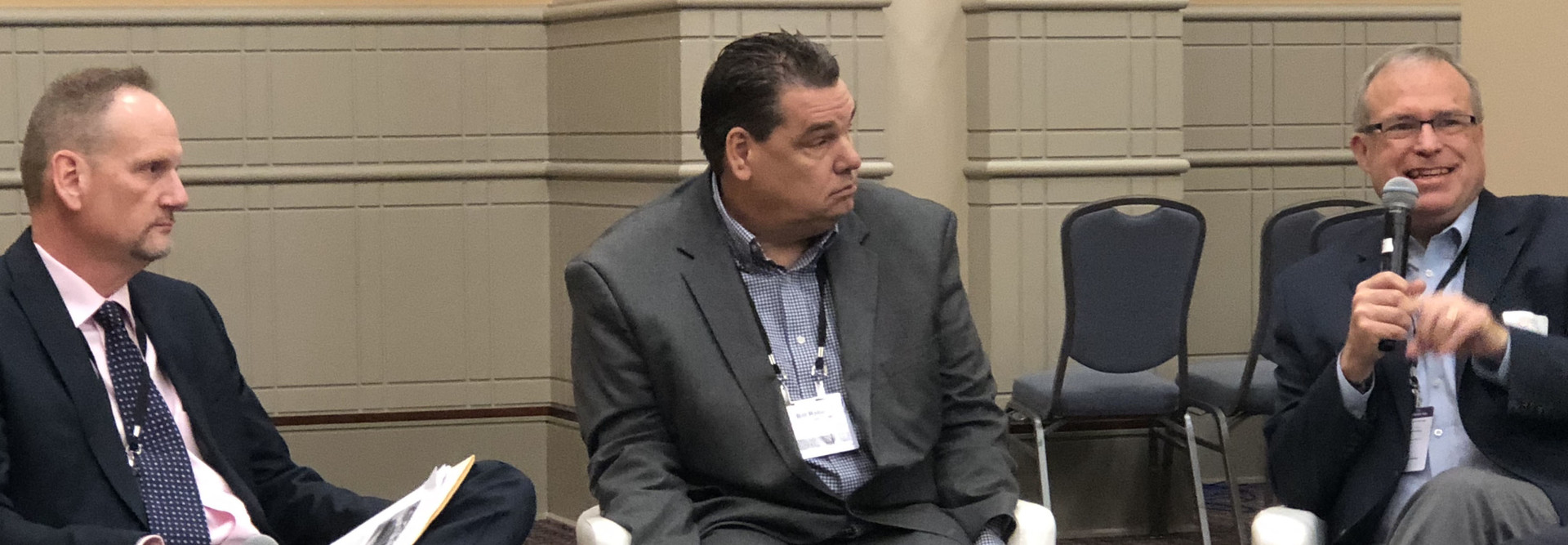LeadingAge 2018: The Future of Senior Care IT Leadership Requires the Death of Silos
IT leaders in senior care must rapidly evolve to focus their efforts not only on technology deployment and management, but also the business use cases that fuel implementation, said Lifespace Vice President of IT John Couture.
Speaking on a panel about the next generation of technology leadership on Tuesday at the LeadingAge 2018 conference in Philadelphia, Couture said that success both now and in the future requires what he and his team refer to as “the death of silos.”
JOIN THE CONVERSATION: Follow @CDW_Healthcare on Twitter for continued LeadingAge 2018 coverage!
“To me, it’s really important for the CIO, or even for single sites that have an IT leader, to build relationships with their peers in the organization,” he said. “The relationships that I have with my peers and understanding their challenges is helpful for me. We really need to break down those walls so that we’re working across instead of vertically.”
To that end, Couture said, people skills are a must, roughly on par with technical skills. The older he gets, he said, the more he hires individuals based on their ability to interact with people.
“Emotional intelligence is so critical to the success of any organization, especially in technology,” Couture said. “I would much rather hire someone that doesn’t have as high of a technical aptitude, but can work as part of a team, share credit, be wrong sometimes. Obviously, if you’re hiring a rocket scientist, they need to be able to drive a rocket. But it’s so important to have people skills.”
Hospitality Must Be an Imperative
Peter Kress, senior vice president and CIO for West Point, Pa.-based Acts Retirement-Life Communities, agreed with Couture, saying that CIOs must, at heart, be hospitality wellness professionals. He called such positions tough yet rewarding.
“The person has to love learning and to love leading other people’s learning,” Kress said. It’s a tough position because it’s so multifaceted, but the mission aspect of what we’re doing is so motivating.”
Still, he also stressed the importance of building infrastructure for the future. For instance, he said, organizations must prepare for 5G and the forthcoming onslaught of data and storage needs by paring down internal networks to only what is necessary and simultaneously improving vendor management capabilities.
“That is what is going to enable the technologies that are going to allow your residents to thrive in your communities,” Kress said. “Those networks are the infrastructure on which the fast-emerging voice technologies and sensor technologies that drive hospitality runs.”
At the same time, he said, organizations can’t afford to skimp on quality because of what may seem like high costs. If you have a choice when installing your infrastructure, Kress said, make a long play.
“You’ve got to be careful that you’re not installing yesterday’s standard,” he said. “It might feel cheap, but it’s not because it’s actually going to need replacing much faster.”
Leverage Data to Show Value
For Bill Rabe, CIO for Skokie, Ill.-based Covenant Living Communities and Services, a solid understanding of and why and how to leverage data analytics is key for both the present and the future of IT leadership in senior care.
Covenant, he said, has a huge appetite for data. As a tech leader in an organization that traditionally has “operated off of a bunch of spreadsheets,” Rabe said he recently put in a new data warehouse solution to support increased visualization.
He also emphasized the importance of being able to share data, saying that he won’t even look at new applications if they don’t have an application programming interface that enables easy access to information.
“It’s so important to have a way, and typically a common way with some governance around it, to be able to manage how you pull data securely,” Rabe said. “One of the things we’re working on is moving data around for business intelligence, but also just integrating with pharmacies, integrating with our providers. To me, that’s the most important part: having a common platform with a common approach.”
Rabe stressed that technology is most effective when it’s invisible. In his “pipe dream” scenario, he said that staff would focus 100 percent of their efforts on meeting resident experience and customer service needs, while robots and computers would perform basic workforce tasks to keep the lights on and the facility clean.
As for his ideal future CIO, he said such a person must emphasize care first and foremost, but also must be able to show the value of their technology choices.
“I think a lot of times where IT fails is not being able to represent that,” Rabe said.
Keep this page bookmarked for articles from the event. Follow us on Twitter @CDW_Healthcare, or the official LeadingAge Twitter account, @LeadingAge, and join the conversation using the hashtag #LeadingAge18.










